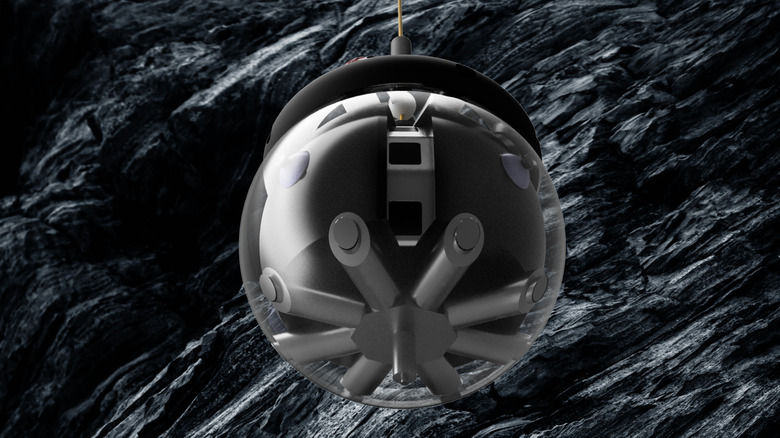ESA Is Designing A Rover To Explore Caves On The Moon
The European Space Agency (ESA) has some ambitious plans for exploring the moon. The ESA doesn't just want to explore the moon's surface, but also the caves which tunnel beneath that surface. For this mission, a new type of lunar rover will be required. Scientists believe that some of the pits which are visible on the moon's surface could lead to underground caves, which are thought to have been created by volcanic activity long ago, hence their other name: lunar lava tubes. These tunnels have never been explored before but it would be an invaluable opportunity to get a glimpse of how the moon formed and other clues to its history (via ESA). They could even provide shelter for future humans lunar explorers as well.
"A view into the interior of a lunar cave would be true exploration – it would reveal unexpected scientific information," said Francesco Sauro, cave scientist and planetary lava tube expert and course director of two of ESA's projects, CAVES and PANGAEA. The ESA has gathered together a group of over 60 scientists and engineers to submit ideas on how to explore these lava tubes. One of the ideas involves the use of a robotic crane and a drone.
Plans for the mission
The ESA's experts plan to use the robotic crane to lower a drone down into a cave in order to explore and map it. A mission like this has never been attempted before and will come with a lot of new challenges to be considered, considering much of the technology that would be needed has never been used on the moon before.
"A mission like this would require the development of innovative technologies, encouraging the space sector to develop new solutions compared to previous lunar missions," Sauro said(via ESA). "This advancement in technology would be a big step forward for lunar and martian exploration." The plan is to develop this technology over the next decade, with the aim to launch the mission using an Ariane 6 rocket in 2033 at the earliest, using a lander called the European Large Logistic Lander (EL3) to get the explorer to the moon's surface. The mission would be planned to last two weeks, which is one lunar day. More plans will be set out in a planetary caves conference scheduled for 2023.
